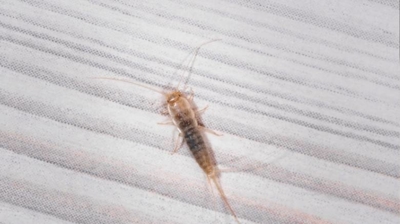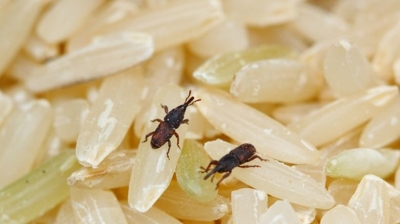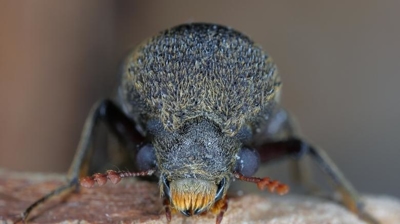
Gnat Control Services

Are Gnats Harmful?
Gnats, despite their small size, can pose various threats depending on the species. They can be harmful in several ways, including health risks, agricultural damage, and general nuisance. Here’s how different types of gnats can be considered harmful:
Biting Gnats (e.g., Black Flies, Sand Flies, Biting Midges)
- Health Risks: These gnats feed on blood and can cause painful bites that lead to itching, swelling, and potential allergic reactions.
- Disease Transmission: Some biting gnats are known vectors for diseases. For example:
- Black flies can spread river blindness (onchocerciasis) in certain parts of the world.
- Sand flies can transmit leishmaniasis, a serious parasitic disease.
- Biting midges (no-see-ums) can transmit livestock diseases like bluetongue virus.
- Secondary Infections: Scratching gnat bites can lead to open wounds, which may become infected.
Non-Biting Gnats (e.g., Fungus Gnats, Eye Gnats, Drain Flies)
- Agricultural & Plant Damage: Fungus gnats are particularly harmful to plants. Their larvae feed on roots, leading to stunted growth, wilting, and even plant death. Eye gnats swarm around people and animals, irritating eyes, noses, and mouths. They can transmit pink eye (conjunctivitis) and other bacterial infections.
- Food Contamination: Drain flies and fruit flies are common in homes and food establishments. They breed in organic waste, drains, and decaying matter, making them potential carriers of bacteria and pathogens. Fruit flies can transfer bacteria like E. coli and Salmonella onto food surfaces.
- Nuisance Factor: While not directly harmful, large swarms of non-biting gnats can be incredibly annoying. They interfere with outdoor activities, infest homes, and make certain areas uninhabitable. Some species, like eye gnats, are drawn to moisture around human eyes, creating significant discomfort.
Livestock & Wildlife Impact
- Stress & Production Loss: Biting gnats can cause significant stress to livestock, leading to weight loss, reduced milk production, and general poor health.
- Disease in Animals: Some gnats carry pathogens that affect farm animals, such as epizootic hemorrhagic disease (EHD) in deer and cattle.
Structural & Environmental Damage
- Gnats in Drain Systems: Drain flies breed in organic buildup within pipes, leading to unpleasant odors and potential blockages.
- Infestations in Homes & Greenhouses: Fungus gnats can become persistent pests in indoor plant environments, making it difficult for gardeners to maintain healthy vegetation.
While some gnats are merely a nuisance, others pose serious risks through bites, disease transmission, agricultural harm, and food contamination. Controlling gnat populations through proper sanitation, moisture management, and pest control methods is essential to mitigating their harmful effects.
Learn more: Do Gnats Bite?
Gnat Control
Hiring our professional pest control for a gnat infestation is strongly recommended because gnats, while small, can be surprisingly persistent and difficult to eliminate completely with over-the-counter methods. Here’s why our professional intervention is often the best choice:
- Accurate Identification: Gnats include several species—fungus gnats, fruit flies, drain flies, and biting gnats. Each type has distinct breeding habits and requires a different control approach. Our professionals can correctly identify the species, which is crucial because misidentifying them can lead to ineffective treatments.
- Targeted Treatment Plans: Our professionals develop customized plans based on the infestation’s severity and location. We know which pesticides or natural treatments are safe and effective, minimizing unnecessary chemical exposure while maximizing impact. For instance, fungus gnats often breed in soil, while fruit flies usually target rotting fruit; each scenario requires a different strategy.
- Long-Term Prevention: Simply killing adult gnats isn’t enough—gnat populations can rebound quickly if their breeding sites remain. Our pest control experts address the root cause, such as damp soil, overripe food, or clogged drains, and provide guidance to prevent future infestations.
- Safe and Effective Use of Chemicals: Our professional pest control technicians are trained in the safe application of insecticides. We know how to target gnats without harming pets, children, or the environment. Misuse of chemicals by homeowners can lead to health risks or ineffective treatment.
- Time and Stress Savings: Gnats can multiply quickly, and DIY efforts can become frustrating and time-consuming. Hiring our professionals ensures the problem is handled efficiently, saving you repeated effort and worry.
- Monitoring and Follow-Up: We provide ongoing, protective visits to monitor gnat activity and ensure the infestation is fully eradicated. This proactive approach drastically reduces the chance of a recurrence.
Our professional pest control is about more than just killing adult gnats—it’s about identifying the type, eliminating breeding grounds, applying safe treatments, and ensuring lasting results. For persistent or large infestations, their expertise makes the process faster, safer, and more effective than DIY methods.
Learn more: How To Get Rid Of Gnats
Learn more: Natural Gnat Repellents
Types Of Gnats
There are several types of gnats - here are several of the most common ones:
- Fungus Gnats (Sciaridae): These gnats are often encountered indoors, particularly around potted plants. They are attracted to decaying organic matter and fungi in the soil. Fungus gnats are generally harmless but can be a nuisance for houseplants.
- Fruit Flies (Drosophilidae): While often called fruit flies, these insects are technically small gnats. They are attracted to overripe fruits and sugary substances. Fruit flies can become pests in kitchens and fruit storage areas.
- Drain Flies (Psychodidae): Drain flies, often called "moth flies" or "sewer flies," are associated with damp, organic-rich environments like drains, sewers, and septic tanks.
Controlling gnats depends on the species and the location where they are causing problems. For indoor infestations, removing breeding sites, maintaining cleanliness, and using traps or insecticides can help manage the issue. Outdoors, addressing the conditions that attract gnats, such as standing water or decaying organic matter, can be effective. Gnats serve as essential components of ecosystems by helping decompose organic matter, but their presence can be bothersome when they become pests.
Gnat Appearance
Gnats are small, flying insects that belong to several families within the order Diptera (true flies). They typically have slender bodies, long legs, and delicate wings. Their size can range from about 1/16 to 1/8 inch (1.5 to 3 mm), though some species may be slightly larger.
Here are some common features of gnats:
- Body Shape: Thin, elongated, and sometimes slightly humped at the thorax.
- Color: Varies from light tan to dark brown or black, depending on the species.
- Wings: Transparent or slightly smoky, often held flat over the body when at rest. Some species have patterned wings.
- Antennae: Typically long and noticeable, helping differentiate them from fruit flies.
- Legs: Thin and long, adapted for clinging to surfaces.
Gnats can resemble mosquitoes but are much smaller. Some species, like fungus gnats, are commonly found near houseplants, while others, like biting midges or black flies, can be pests outdoors.
Learn more: What Do Gnats Look Like?
Learn more: What Do Gnat Eggs Look Like?
Where Are Gnats Found?
Gnats are commonly found in a variety of environments, and where you encounter them depends on the specific species. Here are some of the most likely places to encounter gnats:
- Near Standing Water: Many species of gnats, particularly those that bite (like black flies and biting midges), breed in or around standing water. This includes puddles, ponds, marshes, or any stagnant water where they lay their eggs.
- In Moist, Humid Environments: Gnats are often drawn to areas with high humidity, making places like greenhouses, bathrooms, or damp basements ideal for their presence. Fungus gnats, for example, are commonly found around houseplants in moist, soil-rich environments.
- In Gardens or Wooded Areas: Especially in the warmer months, gnats are drawn to gardens, forests, and other outdoor areas with abundant vegetation. These environments provide food sources (like decaying organic matter) and moisture, both of which attract gnats.
- Around Houseplants: If you have indoor plants, you may encounter fungus gnats. They thrive in moist soil and can be especially abundant when overwatering occurs. Their larvae feed on the organic material in the soil, and the adults are often seen flying around the plants.
- Near Fruit: Some gnats, particularly fruit flies, are attracted to decaying or overripe fruit. Kitchens with exposed fruit or compost bins are prime areas for these gnats to appear.
- Outdoor Picnic or Barbecue Areas: Certain types of gnats, particularly biting midges, are more active in warm months and are attracted to areas where people are gathering, especially if food or sugary substances are present.
- In or Around Trash Bins: Garbage and compost areas attract gnats because they offer both food and moisture, particularly if the waste is organic and decomposing.
- Around Pets or Livestock: Some species of gnats, particularly those that bite, are drawn to animals. They might be seen around livestock or pets, especially in areas where the animals sweat or are near water.
These areas provide the conditions gnats need for breeding, feeding, and thriving, making them more likely places to encounter these tiny flying pests.
Gnat Diet
Gnats have diverse diets depending on their species and life stage. Here's what gnats typically eat:
- Fungus Gnats (Sciaridae): Fungus gnats primarily feed on fungi, mold, and decaying organic matter found in moist soil. The larvae of these gnats feed on fungi and organic material in the soil, especially in potted plants. Adult fungus gnats may feed on nectar and other sugary substances.
- Fruit Flies (Drosophilidae): Fruit flies are attracted to overripe fruits and vegetables. Their larvae, often referred to as maggots, feed on the fermenting sugars present in decaying organic matter. They can also be found near vinegar, wine, and other alcoholic beverages.
- Black Gnats (Bibionidae): The exact dietary habits of black gnats vary among species. In their larval stage, they feed on decaying organic matter, roots, or even grass. Adult black gnats may feed on nectar and other plant exudates.
- Sand Gnats (Ceratopogonidae): Sand gnats, or no-see-ums, primarily feed on the blood of vertebrates, including mammals, birds, and sometimes humans. Their bites can be painful and irritating.
- Eye Gnats (Chloropidae): Eye gnats are attracted to eye secretions, tears, and mucus, which provide them with essential nutrients. They can be a nuisance to humans and animals.
- Drain Flies (Psychodidae): The larvae of drain flies, or moth flies, feed on the organic material that accumulates in damp drains and sewer systems. Adult drain flies feed on sugary substances like nectar and plant exudates.
The dietary preferences of gnats vary widely, with some species feeding on decaying organic matter, fungi, and plants, while others, such as sand gnats and eye gnats, may feed on blood or eye secretions. Understanding the specific feeding habits of the gnat species in question is essential for effective pest control or management.
Learn more: What Do Gnats Eat?
Gnat Life Cycle
The life cycle of gnats typically follows four stages: egg, larva, pupa, and adult. The specific details can vary slightly depending on the species, but the general process is quite similar. Here's a breakdown of each stage:
- Egg Stage: Gnats lay their eggs in moist environments where their larvae will have a readily available food source. Common egg-laying sites include decaying organic matter, damp soil, plant roots, or standing water. Depending on the species, female gnats can lay hundreds of eggs at a time. The eggs are tiny and typically hatch within a few days to a week, depending on environmental conditions like temperature and humidity.
- Larval Stage: Once the eggs hatch, the larvae emerge and begin feeding on organic matter in their environment. These larvae are small, worm-like creatures that thrive in moist, decaying organic material. They can feed on fungi, decomposing plant material, and other organic substances found in soil or stagnant water. The larval stage can last anywhere from a few days to several weeks, depending on the species and environmental conditions. This stage is crucial for growth, as the larvae will molt several times before they are ready to pupate.
- Pupal Stage: After reaching full size, the larvae enter the pupal stage. During this time, the larvae undergo metamorphosis, transforming into adult gnats. Pupation typically occurs in a safe, sheltered location such as within soil or decaying organic matter. This stage can last anywhere from a few days to a couple of weeks, again depending on the species and environmental factors. During pupation, the gnat’s body is undergoing significant changes that prepare it for its adult form.
- Adult Stage: Once the transformation is complete, the adult gnat emerges from the pupa. Adult gnats are typically small, flying insects, and their main goal during this stage is reproduction. Female gnats will seek out suitable environments to lay eggs, starting the cycle over again. Adult gnats are often found near areas where moisture and organic matter are abundant. Depending on the species, adult gnats live for a few days to several weeks.
Factors Influencing The Gnat Life Cycle:
- Temperature: Warmer temperatures speed up the development from egg to adult, while cooler temperatures can slow it down.
- Moisture: Since gnats lay their eggs in moist environments, the availability of water or damp conditions plays a significant role in the cycle.
- Food Availability: Larvae require organic material or decomposing matter to feed on, which impacts their development and survival rates.
Gnats tend to reproduce quickly, and their life cycle can be completed in as little as 1-3 weeks, depending on environmental conditions. This rapid life cycle can lead to large populations, especially in places where conditions are favorable for their development.

Hear From Our Happy Customers
-
"Exceeds Expectations"
I can’t say enough positive things about this company... The tech that came out, Jarvis went above and beyond my expectations. Thank you guys, I will continue using your services.
- Jake M. -
"Wonderful Service"
Wonderful service. Jarvis is great. Took care of everything I needed. Thank you!
- Henry P. -
"Great Communication"
Tech was on time, communication was great, and he accommodated my needs.
- Alonzo W. -
"Very Knowledgeable"
The tech that arrived was courteous, professional, and very knowledgeable. He was Great.
- Uerial I. -
"Fantastic & Patient"
Jarvis was fantastic and patient. He answered my questions with an in-depth explanation and addressed all of my areas of concern. Would love for him to be my assigned tech going forward. Well done!
- Yonnette M. -
"Professional & Considerate"
I’m pleased with Miche services. Jarvis came today. Professional and considerate. Thank you!
- Judy B.



